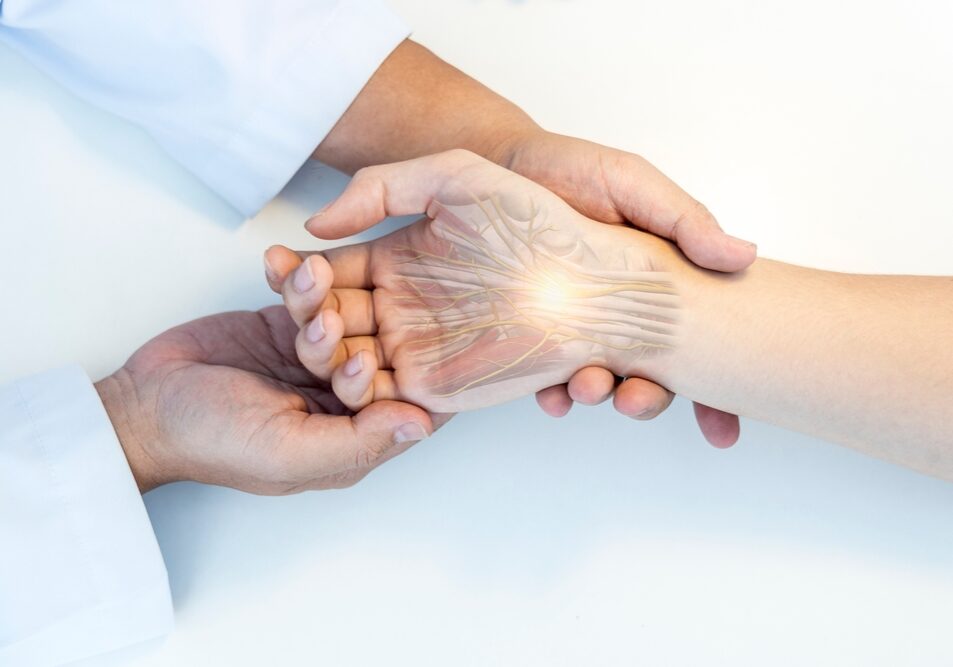Splinting and Stretch Protocol for Pediatric Trigger Thumb
Filed under Treatments
Tan, A. C., Lam, K. S., & Lee, E. H. (2002). The Treatment Outcome of Trigger Thumb in Children. Journal of Pediatric Orthopaedics B, 11(3), 256-259.
The Skinny:
Pediatric trigger thumb is a “relatively uncommon” condition of unknown origins. Studies have indicated that spontaneous recovery of trigger thumb is around 25-40%, and chances increase with age. Meanwhile, implementation of conservative treatment splint therapy, in conjunction with passive stretch programs (pediatric trigger thumb exercises), have shown successful recovery rate as great as 89%.
This review analyzes the success of nighttime/naptime only thumb extension orthotic wear in conjunction with a passive stretch exercises protocol (pediatric trigger finger exercises).

In the Weeds:
115 patients with noted flexion contracture deformity or present triggering/snapping were reviewed. Boys and girls were equally affected, as were left and right thumbs. 23 children had bilateral thumb involvement.
59 children, with an average age of 26.5 months, were treated surgically with A1 pulley release. 56 children, with an average age of 19 months, were treated conservatively with splint therapy.
Splint therapy consisted of nighttime/naptime wear of a thumb extension orthotic (see image) with regular clinic sessions for passive stretch to the thumb, and splint modifications to increase thumb/IP extension (pediatric trigger thumb splint).
Bringing It Home:
Conservative treatment showed an overall success rate of 66%. The success rate decreased with increasing age: from 89% in the under 1 year-old age group to 50% in the over 3 year-old old age group.
Of the 56 patients having conservative treatment, 31 had splint therapy and 25 had passive stretch only. Splint therapy resulted in 77% success rate compared to 52% with the stretch-only group, demonstrating that use of orthotic in conjunction with passive stretch shows the best recovery. Overall, 76% of patients were successfully treated conservatively within 6 months.
For those patients who underwent surgery, either initially or after failed conservative treatment, 1.4% had a recurrence of triggering, and 2.8% had subsequent wound infection requiring treatment with antibiotics.
Limitations: This article asserts that trigger thumb in pediatrics is most likely attributed to acquired injury rather than a congenital anomaly, as none of the participants presented with trigger thumb prior to
six months of age. However, this overlooks the concept that indwelling thumb is developmentally appropriate up through 5 months of age, so observation of thumb IP flexion or thumb flexion prior to
this age would not indicate referral, even if trigger thumb may be co-occurring.
The article does not directly compare the success rates of surgical versus conservative treatment methods. It explains the success rates of conservative treatments while only stating the failure rates of
surgical intervention, which skews the statistics against each other.
More To Read
How to Improve HEP Adherence for Optimal Rehabilitation Outcomes
By Sophia Grimm A lack of adherence to home exercise programs in rehabilitation is a significant problem, with nonadherence estimates as high as 30-65% for general musculoskeletal conditions. This could have potentially detrimental effects on patients’ clinical rehabilitation outcomes as the success of certain medical interventions depends largely on patient adherence to advice and prescribed rehabilitation…
Read MorePillar Pain After Carpal Tunnel Release Surgery
Pillar Pain After Carpal Tunnel Release Surgery Carpal tunnel release (CTR) surgery is a common procedure, with the majority of patients experiencing satisfaction with its outcomes. However, for some individuals, a temporary complication known as “pillar pain” may arise, affecting approximately 13% of those undergoing CTR. Pillar pain manifests in the thenar eminence and hypothenar…
Read MoreAssessments Seen in the Hand Therapy World
By: Dalton Busch Below I have created a list of some of the common assessments that are seen in the hand therapy world. Keep in mind that this list is not inclusive of all the assessments you might come across in this setting. With each assessment, I describe what it is, who the assessment is…
Read MoreSign-up to Get Updates Straight to Your Inbox!
Sign up with us and we will send you regular blog posts on everything hand therapy, notices every time we upload new videos and tutorials, along with handout, protocols, and other useful information.





